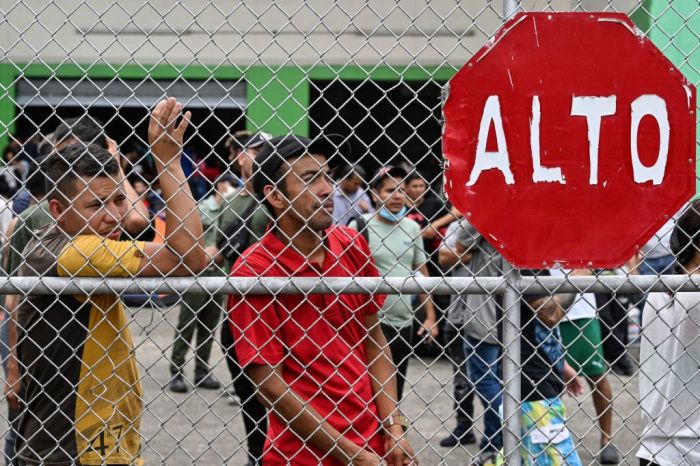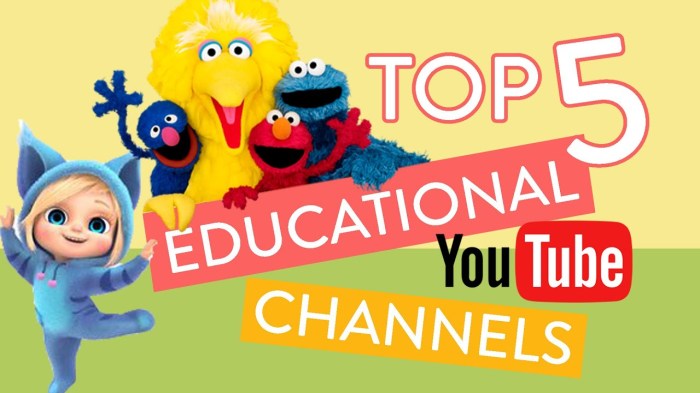Understanding YouTube’s New Policy
YouTube’s new policy regarding kids’ videos is a significant change that aims to protect children’s privacy and online safety. This policy, which came into effect in January 2020, has introduced several changes that impact how creators make and monetize videos intended for children.
The Core Changes Introduced by YouTube’s New Policy
The new policy aims to ensure that children’s data is handled responsibly and that content targeted towards them is appropriate. Here are the key changes:
- Stricter Definition of “Made for Kids” Content: YouTube has broadened the definition of “made for kids” content to include videos that are primarily intended for children, regardless of whether they explicitly mention children. This means that videos featuring characters, themes, or activities typically associated with children are likely to be categorized as “made for kids.”
- Limited Data Collection and Use: When a video is identified as “made for kids,” YouTube restricts the collection and use of personal data from viewers. This includes limiting the collection of cookies and other identifiers, and preventing the use of targeted advertising.
- Restrictions on Monetization: Videos classified as “made for kids” are subject to limitations on monetization features. This includes the inability to use features like ads, sponsorships, and merchandise shelves.
- Increased Enforcement and Oversight: YouTube has increased its efforts to identify and classify “made for kids” content, and has implemented stricter enforcement mechanisms to ensure compliance with the policy.
Reasons Behind the Implementation of the Policy
The implementation of this policy is driven by several factors:
- Protecting Children’s Privacy: The policy aims to prevent the collection and use of children’s personal data without parental consent, aligning with privacy regulations like COPPA (Children’s Online Privacy Protection Act) in the United States.
- Promoting Online Safety: The policy aims to reduce the exposure of children to inappropriate content and potentially harmful online experiences. By limiting data collection and restricting monetization, YouTube seeks to create a safer online environment for children.
- Responding to Public Concerns: The policy is a response to growing concerns about the potential risks associated with children’s online activity, including data privacy, online safety, and exposure to inappropriate content.
Impact on Creators
The new YouTube policy aimed at protecting children has significant implications for creators who produce content for younger audiences. This policy aims to create a safer online environment for children, but it also presents challenges and opportunities for creators.
Challenges for Creators
The policy’s stricter guidelines on content monetization and data collection for children’s videos present several challenges for creators.
- Reduced Monetization Opportunities: The policy restricts monetization options for content intended for children. This means creators may experience a decline in revenue, making it harder to sustain their channels.
- Increased Content Restrictions: The policy imposes stricter guidelines on the type of content that can be monetized for children’s videos. This could limit creative freedom and potentially impact the engagement of younger audiences.
- Data Collection Limitations: The policy restricts data collection practices for children’s videos. This could affect creators’ ability to understand their audience and personalize content effectively.
Opportunities for Creators
Despite the challenges, the new policy also presents opportunities for creators to adapt and thrive in the evolving landscape of children’s content on YouTube.
- Focus on High-Quality Content: The policy encourages creators to prioritize producing high-quality, engaging content that aligns with the safety guidelines. This can lead to a more positive and impactful experience for children.
- Build Stronger Community Connections: The policy encourages creators to build stronger connections with their audience through interactive elements and community features. This can foster a sense of trust and engagement among viewers.
- Explore Alternative Monetization Models: Creators can explore alternative monetization models, such as sponsorships, merchandise sales, or memberships, to supplement their income and sustain their channels.
Strategies for Compliance
Creators can adopt various strategies to comply with the new policy while maintaining audience engagement.
- Clearly Identify Target Audience: Creators should clearly identify their target audience and ensure their content is appropriate for children. This includes using age-appropriate language, themes, and visuals.
- Review and Update Content: Creators should review and update their existing content to ensure compliance with the new policy. This may involve removing or modifying content that is deemed inappropriate for children.
- Utilize Family-Friendly Features: Creators should leverage family-friendly features provided by YouTube, such as the “Made for Kids” setting, to ensure their content is appropriately categorized and managed.
- Engage with the YouTube Community: Creators should actively engage with the YouTube community, including other creators and viewers, to stay informed about the latest policy updates and best practices.
Parental Concerns and Perspectives
The new YouTube policy aimed at protecting children has sparked a wave of discussions and concerns among parents. While the intention is commendable, the implementation and effectiveness of the policy are subject to scrutiny and debate. This section explores the concerns of parents, how the new policy addresses their anxieties, and their perspectives on its effectiveness in safeguarding children.
Addressing Concerns About Content Accessibility
Parents are understandably concerned about the accessibility of inappropriate content to their children. The new policy seeks to address this concern by implementing stricter age restrictions and content moderation measures. For example, videos targeting children are now required to be clearly labeled and accessible only to viewers who are logged in and verified as being of the appropriate age. This means that children who are not logged in or whose accounts have not been verified will not be able to access content designated for younger audiences.
Parental Perspectives on Policy Effectiveness
While the new policy aims to create a safer online environment for children, some parents express skepticism about its effectiveness. They argue that the policy relies heavily on self-reporting and automated systems, which may not always be accurate or comprehensive. Additionally, parents are concerned about the potential for loopholes and workarounds that could allow inappropriate content to bypass the new restrictions.
Parental Concerns Regarding Online Safety
Beyond content accessibility, parents are also concerned about the broader online safety of their children. This includes issues such as cyberbullying, online predators, and the potential for children to be exposed to harmful or misleading information. The new policy addresses these concerns by promoting responsible online behavior and providing parents with tools to manage their children’s online experiences.
Parent Concerns About Impact on Children’s Creativity
Parents also worry about the impact of the new policy on children’s creativity and freedom of expression. They fear that the stricter content moderation measures might stifle children’s ability to create and share their own videos. The policy, however, aims to strike a balance between safety and creativity, allowing children to express themselves within appropriate boundaries.
Parental Feedback and Suggestions
Parents are actively engaged in providing feedback and suggestions to improve the policy. They advocate for more transparency and communication from YouTube regarding the implementation and enforcement of the new rules. Parents also emphasize the need for robust parental control tools that empower them to actively manage their children’s online experiences.
Content Moderation and Enforcement
YouTube’s new policy to protect children necessitates robust content moderation mechanisms. The platform employs a multi-pronged approach to identify and remove content that violates the policy, relying on a combination of automated tools and human oversight.
Challenges in Enforcement
Enforcing the new policy across YouTube’s vast platform presents significant challenges. The sheer volume of content uploaded daily makes manual review impractical. Additionally, the dynamic nature of online content, including evolving trends and creative expression, can make it difficult to establish clear boundaries for what constitutes a violation.
- The platform’s global reach and diverse user base present language barriers and cultural nuances that can complicate content moderation efforts.
- The potential for human error in content moderation decisions is another challenge. Misinterpretation of content, subjective judgments, and the potential for bias can lead to both false positives and false negatives.
Role of Artificial Intelligence and Human Moderators
Artificial intelligence plays a crucial role in YouTube’s content moderation strategy. AI-powered algorithms analyze content for potential violations, flagging suspicious videos for further review. These algorithms are trained on massive datasets of content, enabling them to identify patterns and anomalies that may indicate a violation of the policy.
- While AI is effective in identifying certain types of violations, it cannot fully replace human judgment. Human moderators are essential for nuanced decisions, particularly when interpreting complex content or considering cultural contexts.
- Human moderators review content flagged by AI, making final decisions about whether to remove or restrict access to the content. They also provide feedback to refine the AI algorithms, improving their accuracy over time.
Future Implications and Developments: Youtube New Policy Protect Kids Videos
The new policy, aimed at safeguarding children on YouTube, has significant implications for the platform and its users. Its long-term effects will depend on its implementation, user response, and the evolving landscape of online safety for children.
Impact on Content Creation and Consumption
The policy’s impact on content creation and consumption is multifaceted. The new guidelines may encourage creators to focus on family-friendly content, leading to a potential increase in such videos. However, it could also discourage creators from producing content that may fall under the new restrictions, even if it’s not explicitly harmful. This could result in a shift in the types of content available on YouTube, potentially impacting the platform’s diversity and user engagement.
Policy Evolution and Adaptation
The policy’s effectiveness will be closely monitored, and adjustments are likely to be made based on feedback from users, creators, and experts. This dynamic approach ensures the policy remains relevant and effective in addressing the evolving challenges of online safety for children. For instance, the policy might be refined to address specific types of content or incorporate new technologies to enhance detection and moderation.
Evolving Landscape of Online Safety for Children, Youtube new policy protect kids videos
The online world is constantly evolving, and so are the challenges related to protecting children. The new policy reflects this dynamic landscape, highlighting the importance of ongoing efforts to create safer online environments for children. Future developments may include:
- Increased use of artificial intelligence (AI) and machine learning to automatically detect and flag potentially harmful content.
- Collaboration between YouTube and parents to empower them with tools and resources to manage their children’s online experiences.
- Greater emphasis on age-appropriate content filtering and parental control mechanisms.
Youtube new policy protect kids videos – The future of YouTube’s new policy is still unfolding, with ongoing adjustments and adaptations based on user feedback and evolving technological advancements. It’s a balancing act between protecting children online and ensuring a vibrant and creative platform for content creators. The debate about the policy’s effectiveness and impact will likely continue, highlighting the complexities of navigating the digital world for both creators and consumers.
YouTube’s new policy to protect kids’ videos is a hot topic, but it’s not the only thing making headlines. Microsoft’s MUM Project Scorpio, a powerful new AI system, is also attracting attention, and you might be surprised to learn about its potential impact on the future of online content, including how we consume children’s videos. It’s all about keeping up with the latest tech trends, and the microsoft mum project scorpio price is just one piece of the puzzle.
Ultimately, both YouTube’s policy and Microsoft’s MUM Project Scorpio are shaping the way we experience the digital world, and it’s exciting to see what the future holds.
 Standi Techno News
Standi Techno News

